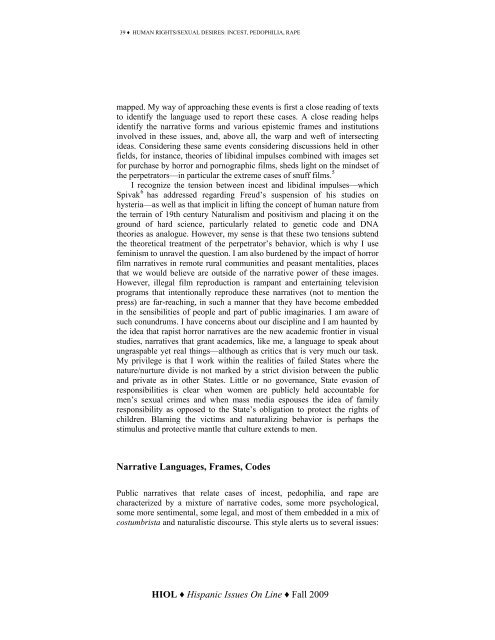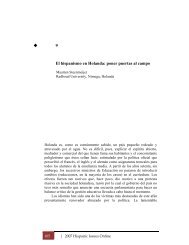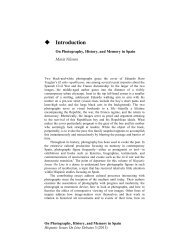Human Rights/Sexual Desires: Incest/Pedophilia/Rape
Human Rights/Sexual Desires: Incest/Pedophilia/Rape
Human Rights/Sexual Desires: Incest/Pedophilia/Rape
Create successful ePaper yourself
Turn your PDF publications into a flip-book with our unique Google optimized e-Paper software.
39 ♦ HUMAN RIGHTS/SEXUAL DESIRES: INCEST, PEDOPHILIA, RAPE<br />
mapped. My way of approaching these events is first a close reading of texts<br />
to identify the language used to report these cases. A close reading helps<br />
identify the narrative forms and various epistemic frames and institutions<br />
involved in these issues, and, above all, the warp and weft of intersecting<br />
ideas. Considering these same events considering discussions held in other<br />
fields, for instance, theories of libidinal impulses combined with images set<br />
for purchase by horror and pornographic films, sheds light on the mindset of<br />
the perpetrators—in particular the extreme cases of snuff films. 5D<br />
I recognize the tension between incest and libidinal impulses—which<br />
SpivakD6 has addressed regarding Freud’s suspension of his studies on<br />
hysteria—as well as that implicit in lifting the concept of human nature from<br />
the terrain of 19th century Naturalism and positivism and placing it on the<br />
ground of hard science, particularly related to genetic code and DNA<br />
theories as analogue. However, my sense is that these two tensions subtend<br />
the theoretical treatment of the perpetrator’s behavior, which is why I use<br />
feminism to unravel the question. I am also burdened by the impact of horror<br />
film narratives in remote rural communities and peasant mentalities, places<br />
that we would believe are outside of the narrative power of these images.<br />
However, illegal film reproduction is rampant and entertaining television<br />
programs that intentionally reproduce these narratives (not to mention the<br />
press) are far-reaching, in such a manner that they have become embedded<br />
in the sensibilities of people and part of public imaginaries. I am aware of<br />
such conundrums. I have concerns about our discipline and I am haunted by<br />
the idea that rapist horror narratives are the new academic frontier in visual<br />
studies, narratives that grant academics, like me, a language to speak about<br />
ungraspable yet real things—although as critics that is very much our task.<br />
My privilege is that I work within the realities of failed States where the<br />
nature/nurture divide is not marked by a strict division between the public<br />
and private as in other States. Little or no governance, State evasion of<br />
responsibilities is clear when women are publicly held accountable for<br />
men’s sexual crimes and when mass media espouses the idea of family<br />
responsibility as opposed to the State’s obligation to protect the rights of<br />
children. Blaming the victims and naturalizing behavior is perhaps the<br />
stimulus and protective mantle that culture extends to men.<br />
Narrative Languages, Frames, Codes<br />
Public narratives that relate cases of incest, pedophilia, and rape are<br />
characterized by a mixture of narrative codes, some more psychological,<br />
some more sentimental, some legal, and most of them embedded in a mix of<br />
costumbrista and naturalistic discourse. This style alerts us to several issues:<br />
HIOL ♦ Hispanic Issues On Line ♦ Fall 2009






